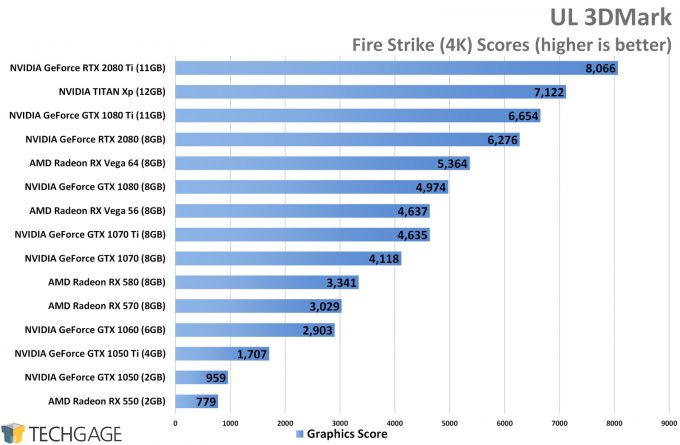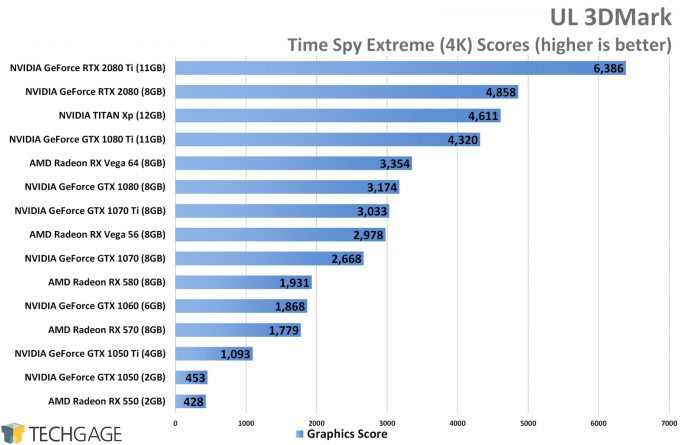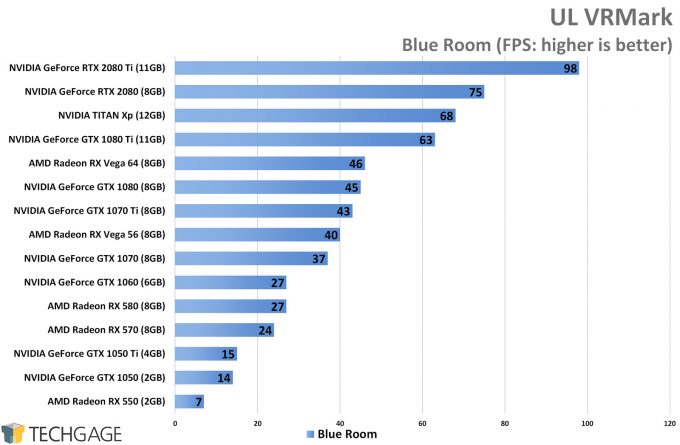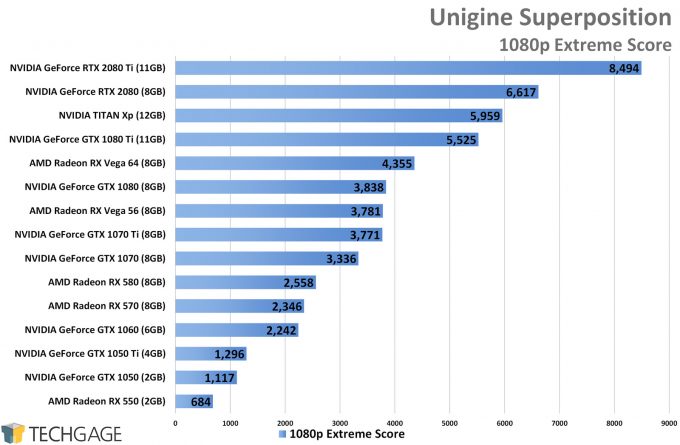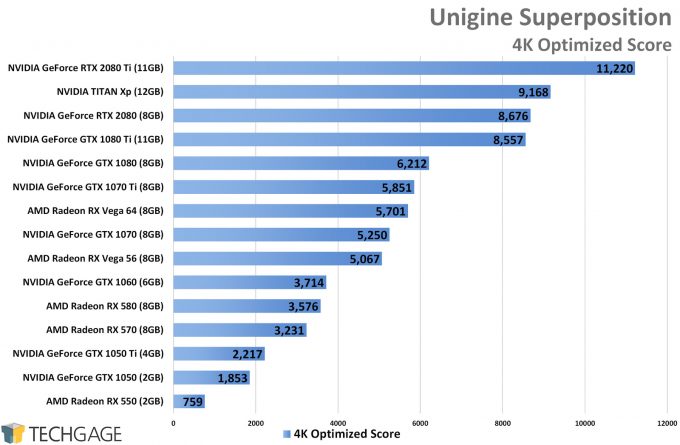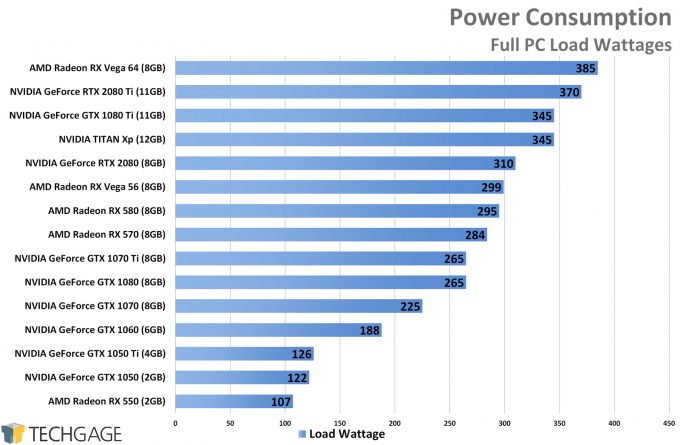- Qualcomm Launches Snapdragon 4 Gen 2 Mobile Platform
- AMD Launches Ryzen PRO 7000 Series Mobile & Desktop Platform
- Intel Launches Sleek Single-Slot Arc Pro A60 Workstation Graphics Card
- NVIDIA Announces Latest Ada Lovelace Additions: GeForce RTX 4060 Ti & RTX 4060
- Maxon Redshift With AMD Radeon GPU Rendering Support Now Available
NVIDIA GeForce RTX 2080 & 2080 Ti 4K & Ultrawide Gaming Performance

NVIDIA’s new Turing-based GeForce RTX graphics cards have landed, and we have a lot of performance information inside these few pages to help you justify (or not justify) a purchase. We’re pitting both of the new cards along with six last-gen models against eight games at three resolutions – including 4K and 3440×1440.
Page 4 – 3DMark & VRMark, Superposition & Power
UL 3DMark
3DMark is a decent gauge for comparing one GPU to another, but based on the other regular results in this article, I’m not sure it’s much of an accurate one. In both the 1080p (not shown) and 4K Fire Strike tests, the 2080 Ti gain over 1080 Ti was 22%, whereas the smallest gain I saw across eight games was 27% – the highest being 47%.
The Time Spy test is DirectX 12, and surprisingly gives us very different results in the same match-up. In that test, the 2080 Ti outperforms the 1080 Ti by 48%, almost matching that 47%. I am not sure how common that kind of gain is going to be, but F1 2018 exhibited a 41% boost, and Deus Ex, 40%.
We can’t ignore the strange 1080 Ti results which put it above the newer, and technically faster 2080 in the Fire Strike test. This anomaly was seen here and there on the previous pages, but overall, it’d be safe to say both the 2080 and 1080 Ti are pretty much equal cards (ignoring the disappearance of some VRAM).
UL VRMark
Things fare well for the 2080 Ti in VRMark, which puts it 55% ahead of the 1080 Ti, and 44% ahead of the last-gen champ TITAN Xp. I am not sure how this correlates with real-world VR performance right now, but the scaling seems expected enough.
Unigine Superposition
Superposition’s tests give us a split much like 3DMark’s did. The 1080p test, which uses “extreme” settings, claims a lead of 54% for the RTX 2080 Ti against the GTX 1080 Ti. Meanwhile, the 4K “optimized” test shows a more modest 31% gain, which is closer to the 4K average seen across all eight of our tested games (which was 36%).
Power Consumption
Of all the charts in this review, it was this one AMD had to go break into the top for. Nonetheless, in a direct match-up between the 2080 Ti and 1080 Ti, the newer card adds about 25W to the overall power draw. Normally, we’d expect to see reduced power consumption, but the performance gain on this generation definitely outweighs its increased power thirst.
We do see that kind of power drop on the RTX 2080, versus the 1080 Ti, dropping 35W off of the typical load. Ultimately, NVIDIA succeeded in delivering more performance per watt this generation.
Support our efforts! With ad revenue at an all-time low for written websites, we're relying more than ever on reader support to help us continue putting so much effort into this type of content. You can support us by becoming a Patron, or by using our Amazon shopping affiliate links listed through our articles. Thanks for your support!





